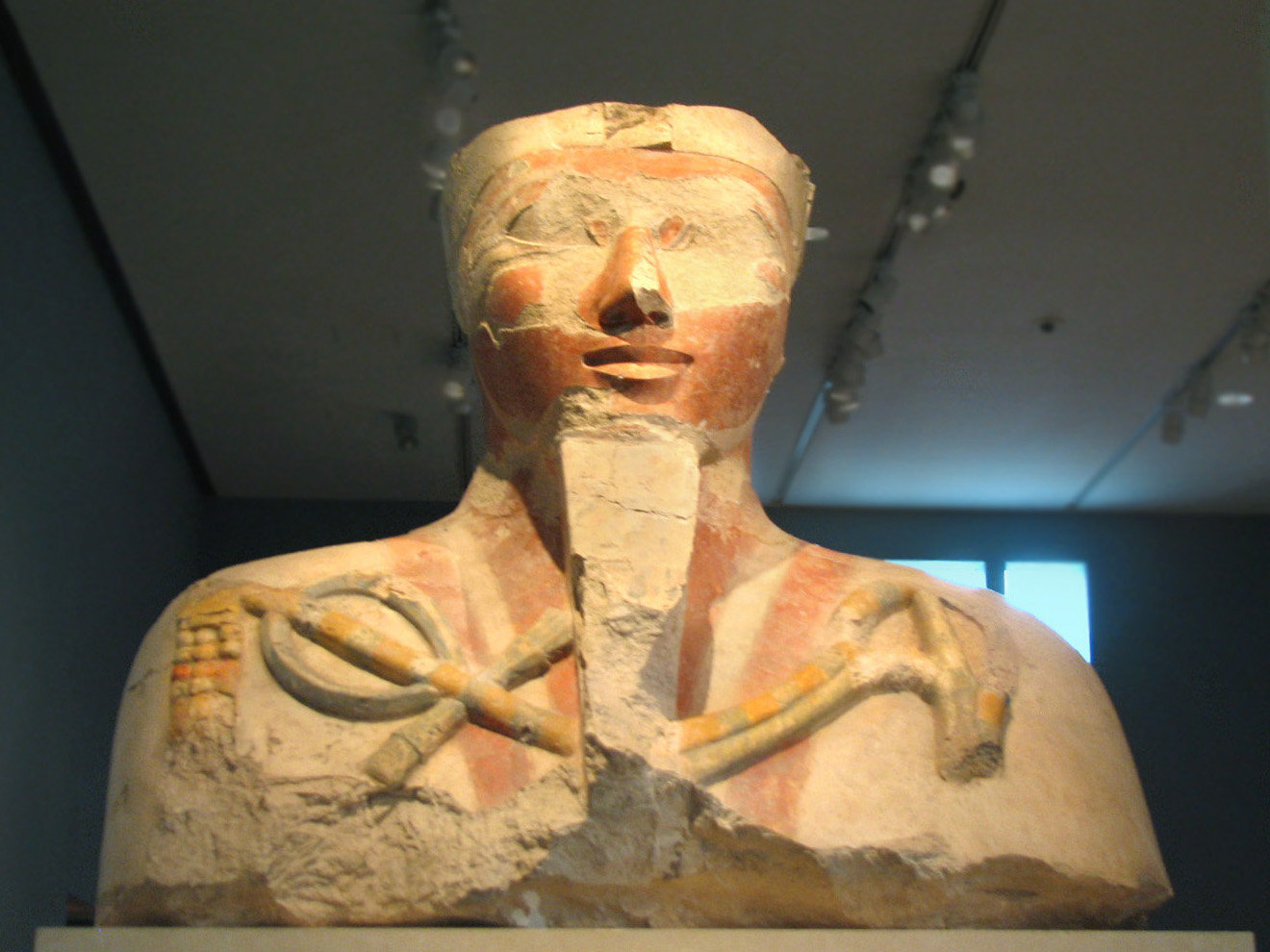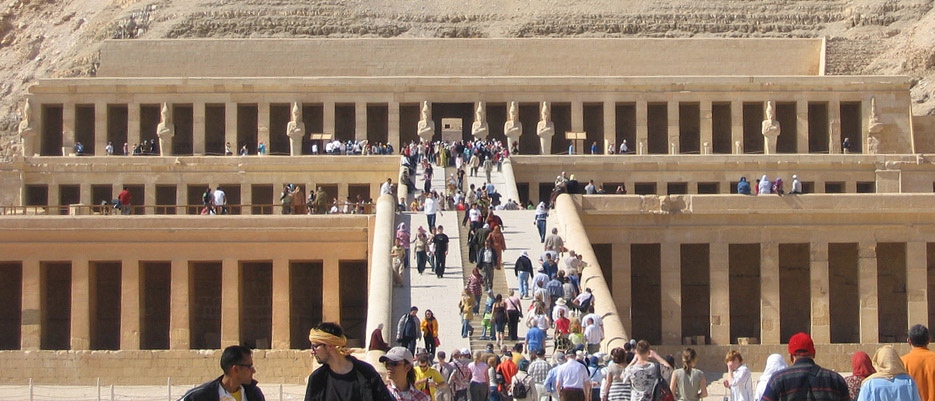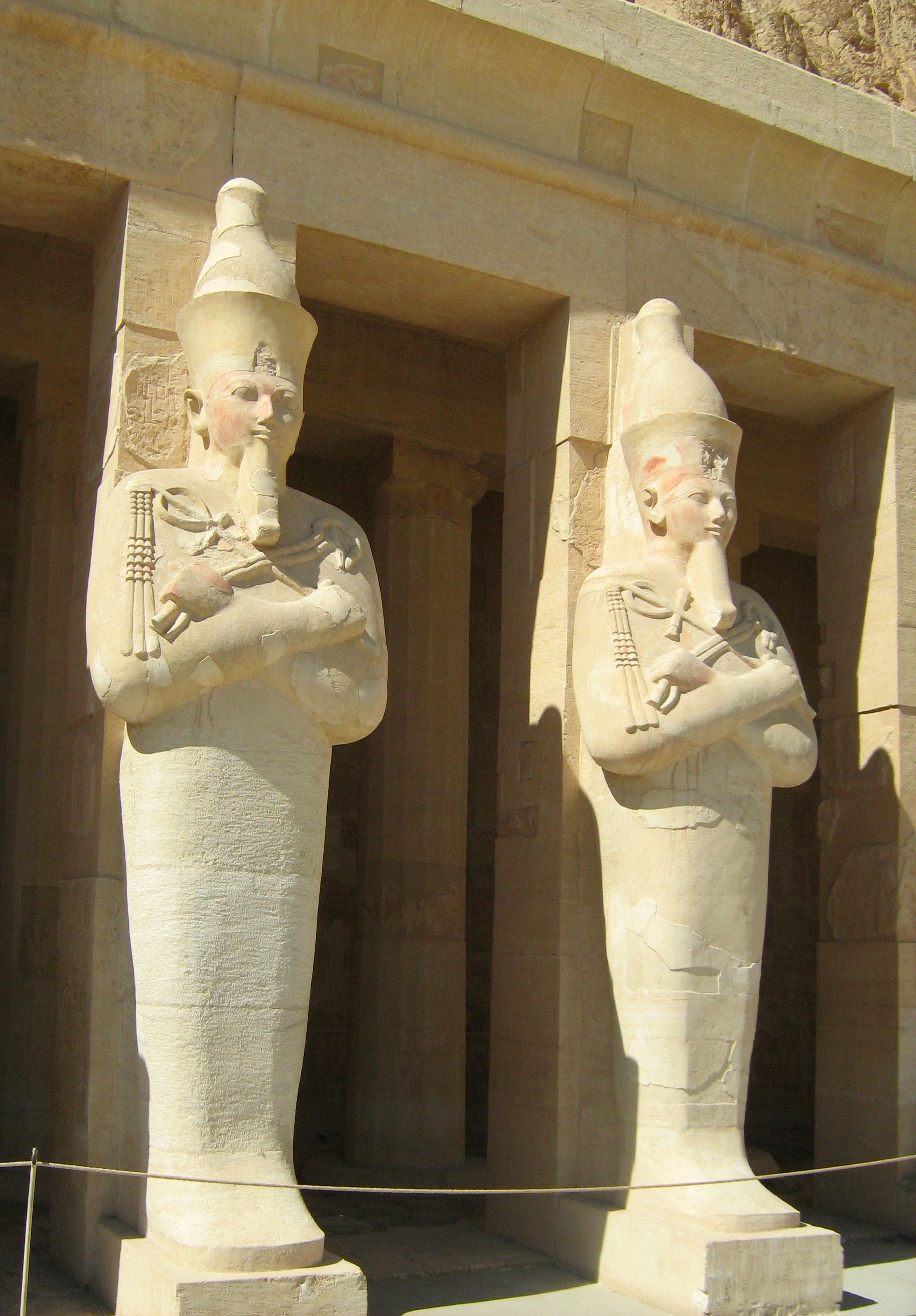
Head and Shoulders from an Osiride Statue
Dynasty 18, joint reign of Hatshepsut and Thutmose III
Painted limestone
From Thebes, originally from one of the Hatshepsut's temple pillars on the upper terrace,
excavated in fragments scattered throughout the quarry, with a few fragments found in the 'Hatshepsut Hole'
MMA excavations, 1922-23, 1926-28




